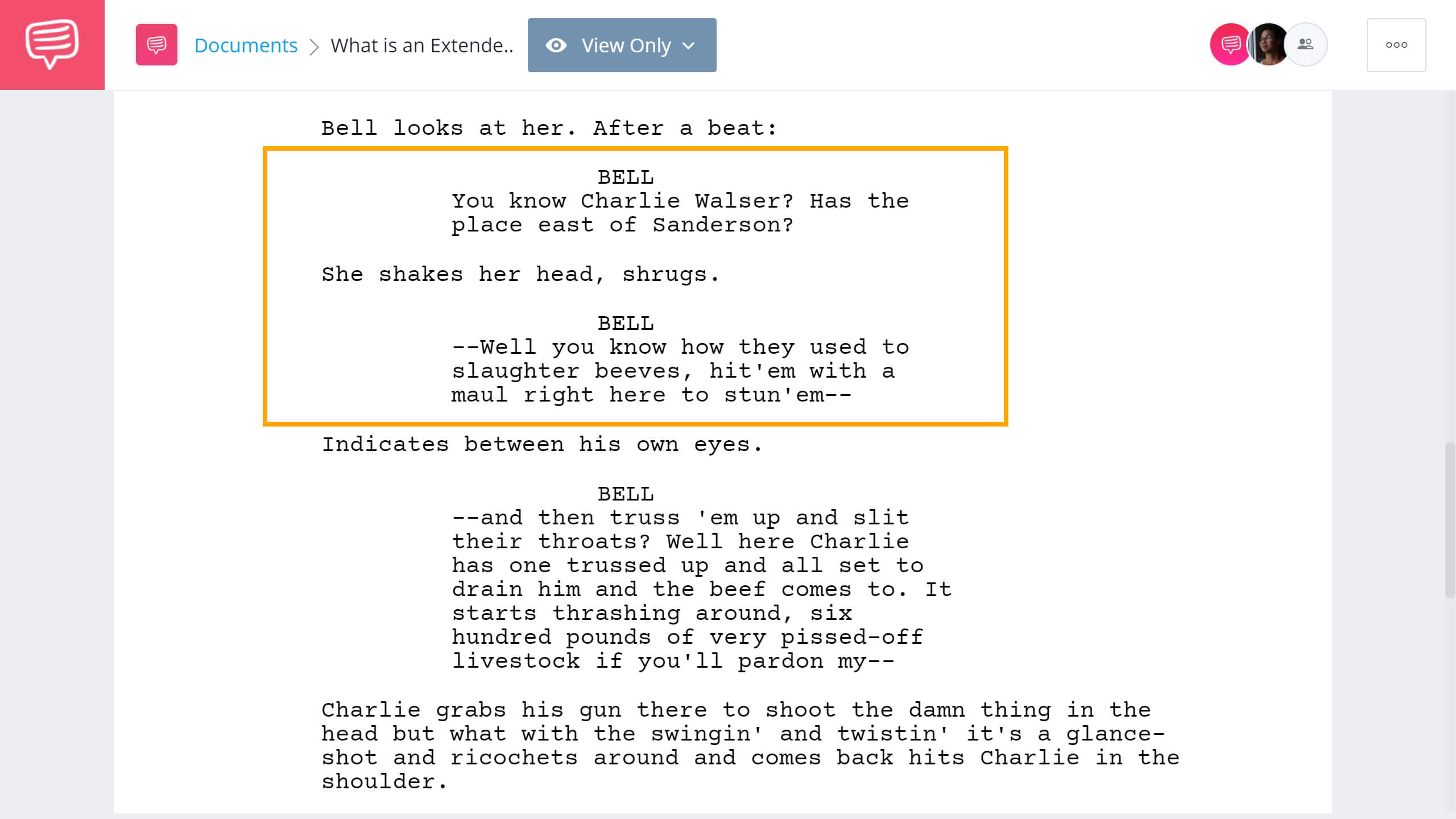Every writer works from a place of passion. The ideas, concepts, stories or experiences that you pull from when you write can be crystal clear to you, but communicating those ideas to a larger audience may pose a challenge. One of the best tools for communicating abstract ideas in an engaging way is the extended metaphor.
What is an extended metaphor and how is it different from a normal metaphor? How do writers use these metaphors in their work? In this article, we’ll take a look at the extended metaphor definition, metaphorical poems, and other examples to answer these questions.
What is an Extended Metaphor?
First, an extended metaphor definition
To better distinguish this type of metaphor from the others, let’s take a look at the extended metaphor definition.
EXTENDED METAPHOR DEFINITION
What is an extended metaphor?
An extended metaphor works similarly to a normal metaphor, but is elaborated over a series of sentences, paragraphs, or stanzas. Extended metaphors are used in poetry, literature, and screenwriting to communicate abstract concepts through detailed comparison and story.
Extended metaphor example:
- The Road Not Taken by Robert Frost
- Hound Dog by Jerry Leiber & Mike Stoller
- Life is a Highway by Tom Cochrane
What is an Extended Metaphor?
Differentiating Extended Metaphors
Extended metaphors are often confused with other types of figurative language. Let’s set the record straight.
1. Extended Metaphor vs. Allegory
An allegory is a storytelling technique used to convey something symbolic or thematic to the audience through narrative means. Allegories utilize characters, stories, and plots to portray abstract concepts. An allegory can utilize extended metaphors, but extended metaphors are not allegories– at most, extended metaphors last a few paragraphs.
One of the most famous allegories of all time is Plato’s Allegory of the Cave. In the allegory, the metaphor about prisoners in a cave is used to underscore themes of human perception and truth. The allegory has been the basis of countless films.
Learn more about the Allegory of the Cave in the video below.
Extended metaphor example: The Allegory of the Cave • Subscribe on YouTube
2. Extended Metaphor vs. Conceit
A conceit compares two very unlike things in an elaborate and often sophisticated extended metaphor. Authors use conceits to challenge readers to find connections between even the most dissimilar things. This connection creates meaning that is often difficult to express through other means.
3. Extended Metaphor vs. Controlling Metaphor
If a metaphor is extended over the course of an entire story, it becomes a controlling metaphor. But what’s the difference between a controlling metaphor and an allegory? We know, a lot of differentiating, but bear with us.
A controlling metaphor is still comparing two things within a story. An allegory, meanwhile, is being compared to something larger than the story. For example, Avatar works as an allegory for the earth’s climate crisis caused by human activity.
But there is no controlling metaphor like there is in, say, The Matrix, where the matrix itself represents Neo’s ability to break out of the conformity of his everyday life.
What is an extended metaphor used for?
Simplify themes and concepts
One of the main reasons authors use extended metaphors is to simplify abstract concepts and themes that they are trying to communicate to an audience. Because of the detail and length of extended metaphors, authors can elaborate on standard metaphors to be more effective.
Extended metaphor poems utilize this function to a great degree. Take a look at this extended metaphor example, the poem The Road Not Taken by Robert Frost. Frost makes the comparison between two roads and life choices.
The poem’s most famous line is its last as it describes the impact of taking the road less traveled.
“Two roads diverged in a wood, and I—
I took the one less traveled by,
And that has made all the difference.”
The concepts of life choices, indecision, and uncertainty can be difficult to articulate. But in this extended metaphor example, Frost uses the metaphor to perfectly communicate his thoughts to the reader in an engaging way.
What makes this extended metaphor example engaging? Frost uses vivid imagery to bring the poem to life.
Related Posts
What is an extended metaphor used for?
Provide vivid imagery
Not only are extended metaphors more effective at communicating abstract ideas, they are substantially more interesting. Authors and philosophers have used extended metaphors to illustrate their more abstract ideas in a way that captivates readers and audiences.
A great example of this can be found in the No Country for Old Men screenplay. In this scene, Lieutenant Bell is trying to tell Carla Jean that no matter how prepared her husband is, he is still in danger. To convince her of this fact, Bell uses the extended metaphor. We brought the screenplay into the StudioBinder screenwriting software to analyze it further.
What’s an extended metaphor? • No Country for Old Men
The vivid imagery Bell uses to describe the uncertainty of any outcome not only makes his point more convincing, but a whole lot more engaging. Whether you are writing a poem, novel, or screenplay consider using extended metaphors to explain your ideas rather than simply explaining them outright. Your audience will thank you for it.
Related Posts
What’s an extended metaphor used for?
Create effective comparisons
What is an extended metaphor good at beyond illustrating abstract concepts? When crafted, extended metaphors are also great at elaborating on traits of a character through detailed comparison. Extended metaphors can associate qualities to things or characters that would be difficult to do otherwise.
Rather than simply using descriptive words and adjectives, extended metaphors can romanticize or dramatize a character. Take this famous line from Shakespeare’s Romeo and Juliet for example. When Romeo first sees Juliet, he breaks out in a monologue that best describes his emotions.
“But, soft! What light through yonder window breaks? / It is the east, and Juliet is the sun.”
Shakespeare elaborates on this initial comparison in great detail to allow the audience to understand how Romeo sees Juliet. This comparison is immensely important to the story because while the audience may not see Juliet in the same way, it enables them to understand Romeo’s feelings and actions.
Metaphors in general are an incredibly useful tool for any writer to better communicate their ideas through a comparison that is engaging and clear to an audience. Extended metaphors are an opportunity to elaborate on this tool in greater detail and length that can make for clearer and simpler communication of even the most abstract ideas.
Related Posts
UP NEXT
How writers use metaphor
The extended metaphor is one of various types of metaphors at your disposal. Each type of metaphor poses a different function that can elevate your work. Learn more about the different types of metaphors such as mixed metaphors and visual metaphors in our next article.

